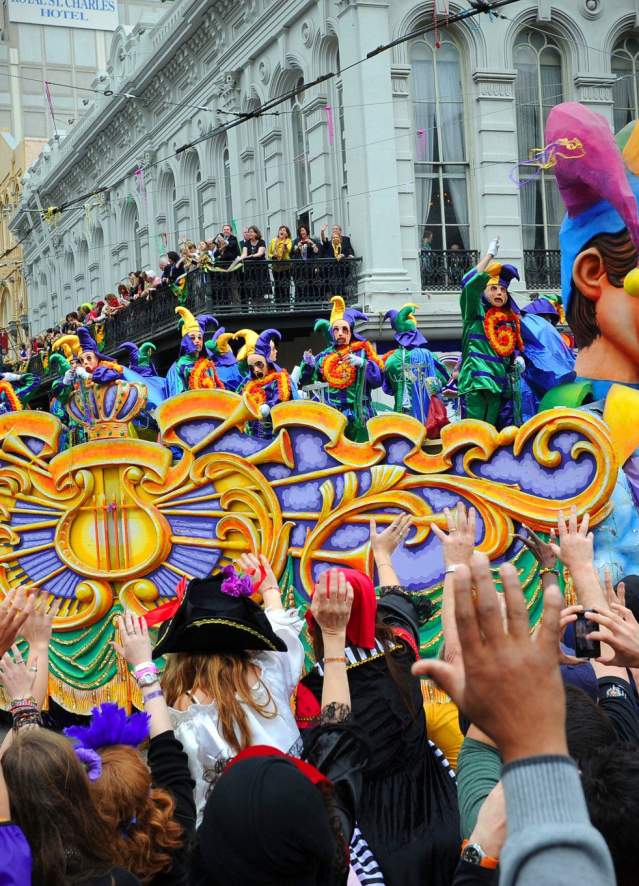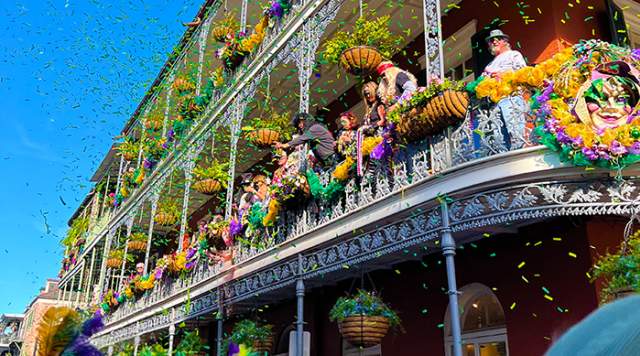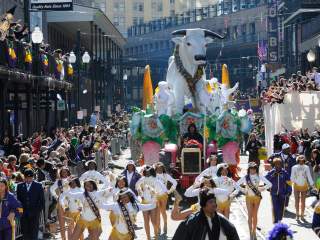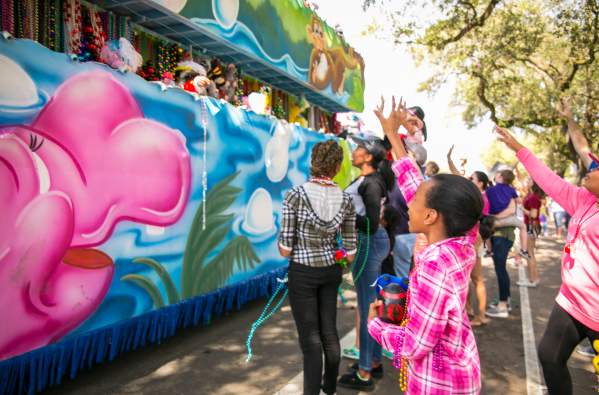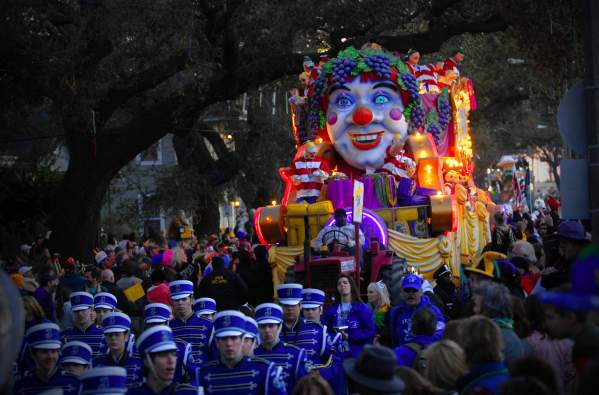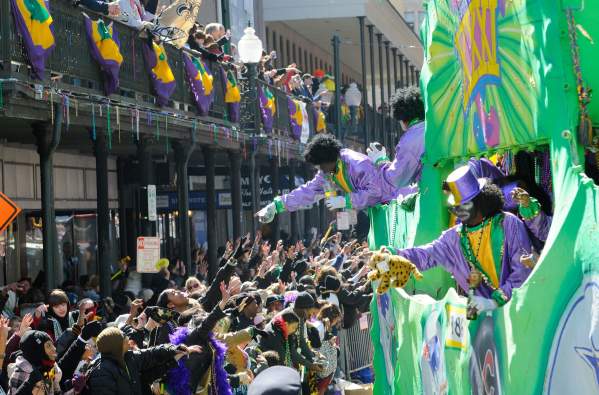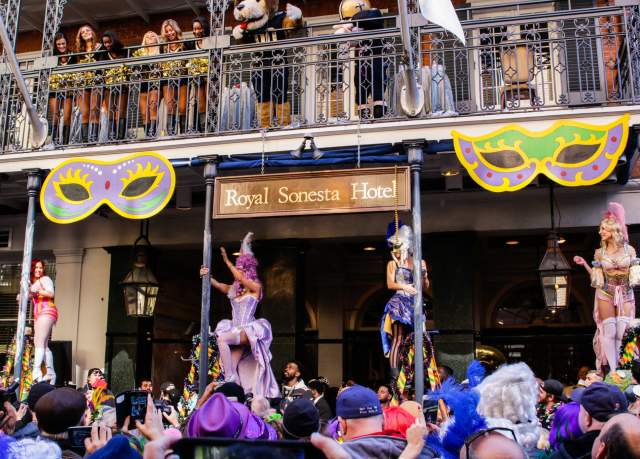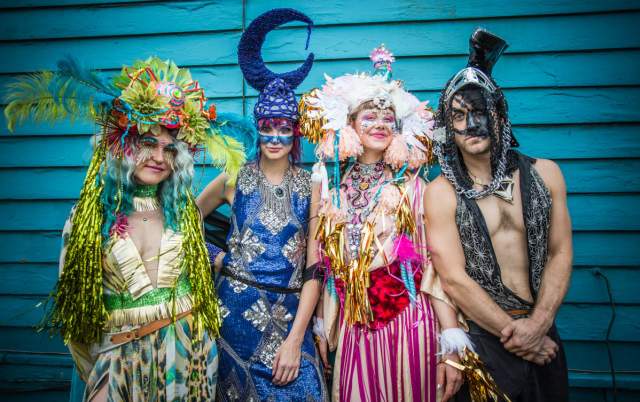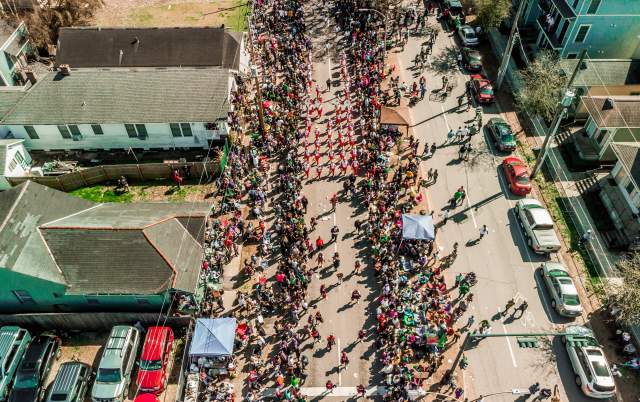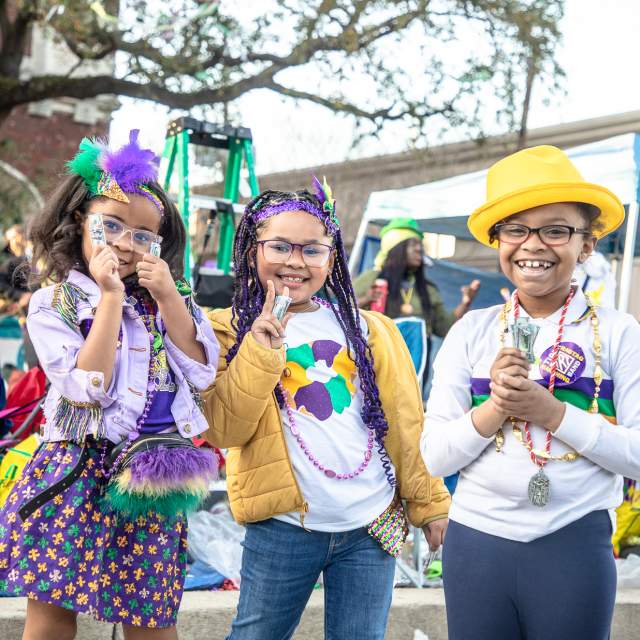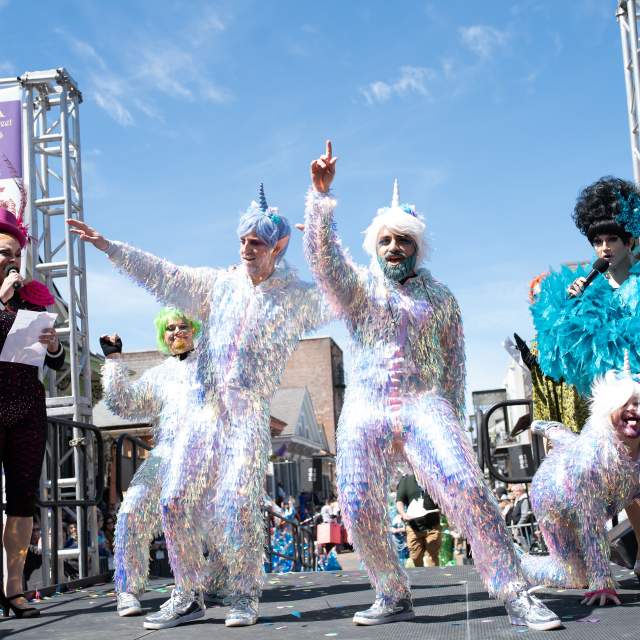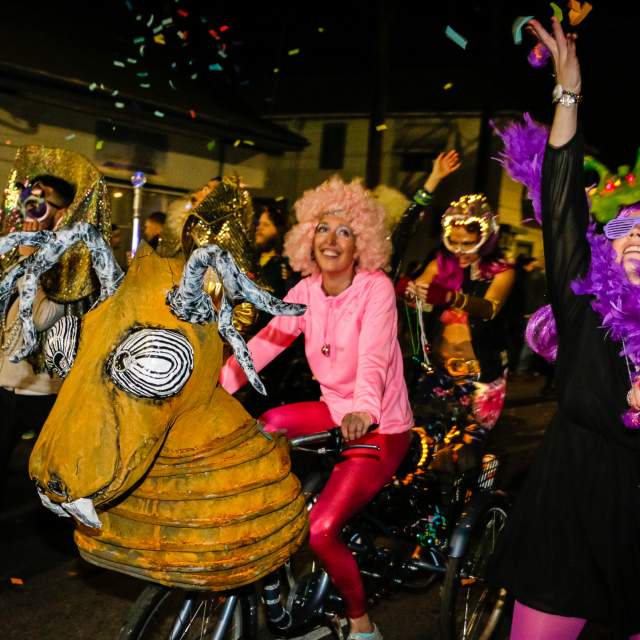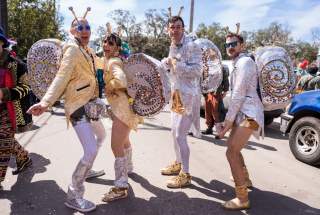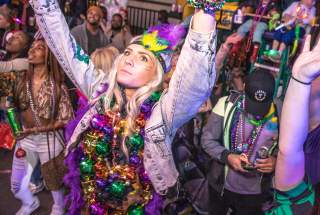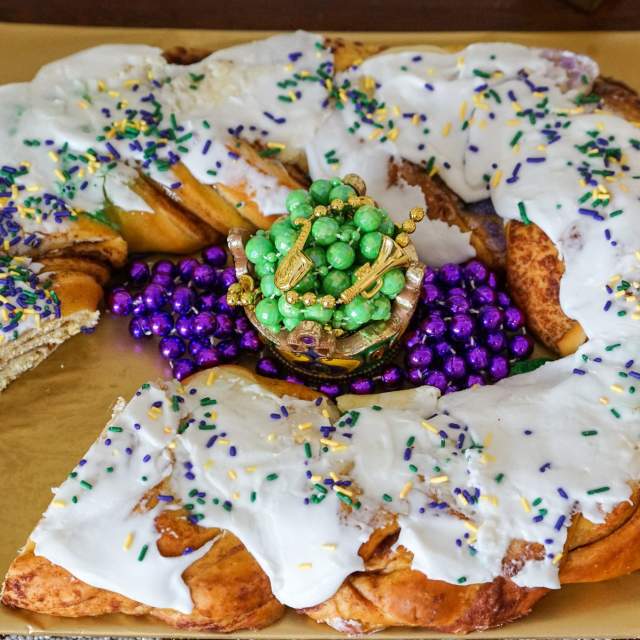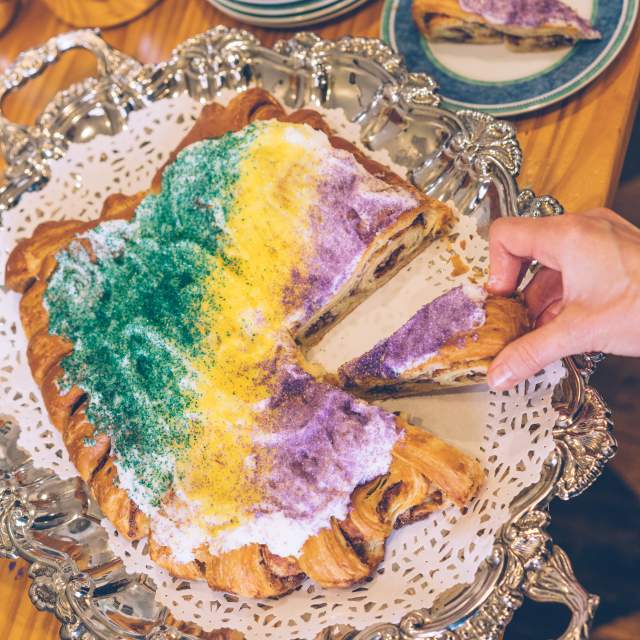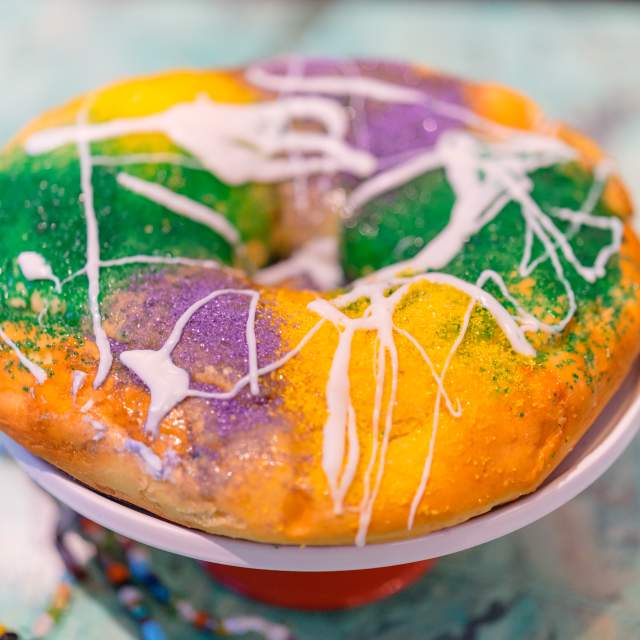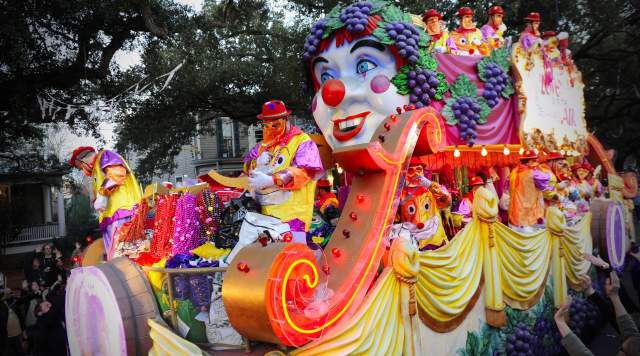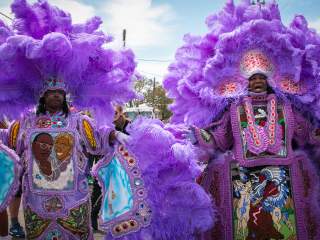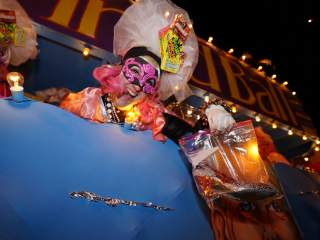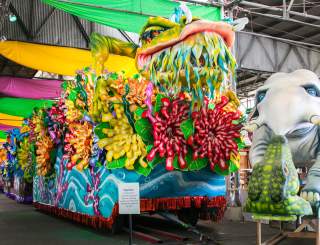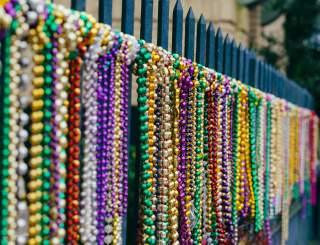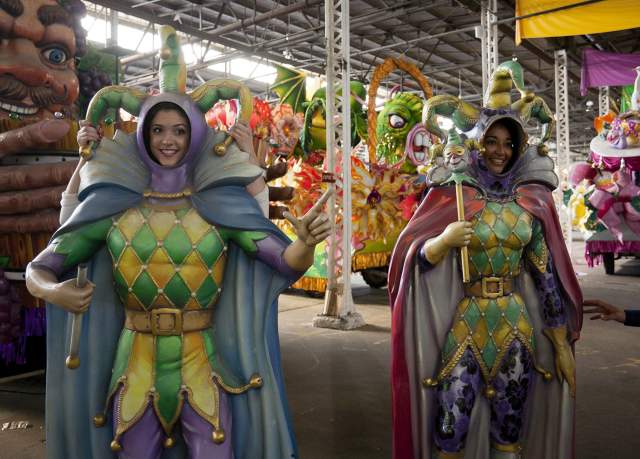Mardi Gras in New Orleans
The king of New Orleans celebrations shows off the city's spirit
Mardi Gras in New Orleans is a one to a three-month stretch of the year in which the streets come alive with music, art, and costumed revelers. Beginning on Twelfth Night, January 6, the best season of the year is upon us: king cake, bead-tossing, and parading begins and only increases as we make our way toward Mardi Gras Day. The next Mardi Gras day is on February 17, 2026.
There’s so much to celebrate during Carnival season, where locals rule and visitors are more than welcome to join in on the fun. On the weekends leading up to Fat Tuesday, parades roll all over town. Spectators gasp at the colossal Endymion floats and delight in the political satire of Krewe du Vieux. There’s something to do during every week of the Mardi Gras season.
Whether it's new traditions like Krewe of Chewbacchus (with its Star Wars-inspired tomfoolery) or decades-old stalwarts Zulu and Rex (which celebrates its 150th anniversary this year), visitors are encouraged to explore our Mardi Gras traditions. Some of our favorite ways to do this? Try ten different slices of king cake, stand in awe of community walking krewes, and make new friendships with your neighbors on the route. This is the place to have the authentic Mardi Gras experience.
Mardi Gras Basics & Essential Information
Mardi Gras 101: Everything You Need to Know
Plan the perfect Mardi Gras: parades, parties, places to stay & insider secrets all in one guide.

All on a Mardi Gras Day
From dazzling parades to vibrant street parties, every neighborhood comes alive with music, costumes, and tradition. Plan your trip today!
visitneworleans
Mardi Gras FAQs
Is there anything richer than praline pecan cheesecake? Yes. The history and traditions of Mardi Gras in New Orleans. Let’s take a look behind the mask.
Mardi Gras Krewes
Mardi Gras krewes throw the parades and each has its own history and traditions. Let us throw you a little trivia, mister.
Mardi Gras A to Z
Mardi Gras is many things, so many that it takes every letter of the alphabet to explain.
Mardi Gras Hotel Packages
Find hotel rooms and packages to make your Mardi Gras stay unforgettable.
How to Celebrate Mardi Gras like a Local
Must-do Mardi Gras experiences from the people who know best–the locals!

Mardi Gras Like a Local: Insider Tips for the Best Experience!
Want to experience Mardi Gras like a true New Orleanian? Locals know the best spots to catch throws, where to find the cleanest restrooms, and how to navigate the city on Fat Tuesday. From staking out the perfect parade spot to must-try food and drink, these insider tips will help you celebrate Mardi Gras the right way!
visitneworleans
Mardi Gras for Everyone
Whether you're traveling with kids, looking for LGBTQ celebrations, or interested in experiencing the earlier side of Mardi Gras, there's a Mardi Gras experience for everyone in New Orleans.
All Things King Cake
'Tis the season's most sought-after sweet. From where to find them to how to make one, it's everything you wanted to know about the King Cake.
Mardi Gras History & Traditions
Mardi Gras History and Traditions
Mardi Gras is so much more fun when you understand what it is you’re celebrating and what each tradition means to the generations of parade-goers who have…
Mardi Gras All Year Long
Mardi Gras may officially last from January 6 until Fat Tuesday, but there are plenty of ways to experience the Mardi Gras magic all year long in New Orleans.
Mardi Gras Museums
The magic and spectacle that is Mardi Gras happens every Carnival season starting Twelfth Night…
Mardi Gras Tours
If you missed the city’s annual Carnival festivities, take a Segway, bike, walking or bus tour…
Costume/Mask Shops
In a city where costume shops are as common as supermarkets, there is always a reason to find more…
Mardi Gras Beads and Supplies
Take home some Carnival spirit from some of the many places that sell beads, costumes and other…
Mardi Gras World
Come see where Mardi Gras is made. See Mardi Gras magic created right before your eyes in this maze of amazing carnival creations. Guided tours, video and gift shop…
